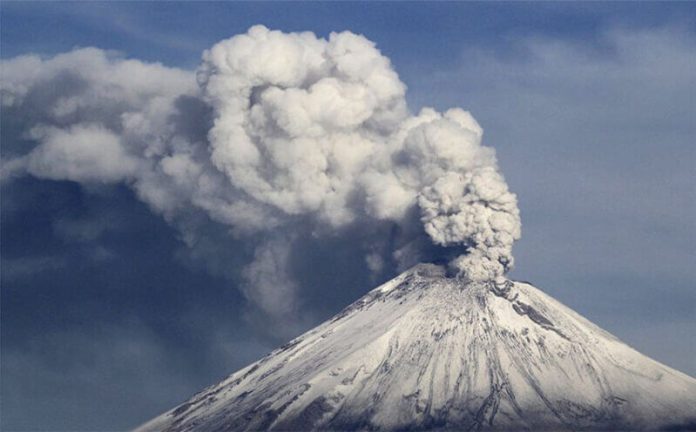At least one México state municipality has set up shelters to receive potential evacuees as heightened activity continues at the Popocatépetl volcano.
There were 2,062 exhalations, 30 explosions, 13 volcano tectonic earthquakes and more than 6,000 minutes of tremors at El Popo during the first 21 days of September.
Activity at Don Goyo, as the stratovolcano is colloquially known, has increased in recent days, although the National Disaster Prevention Center (Cenapred) has not raised its alert from yellow Phase 2.
The yellow Phase 3 alert is the highest warning level before the red phase, in which people living near the volcano are advised to be ready to evacuate.
Even though the alert level is two notches below the red phase, authorities in Chalco, a municipality to the northwest of El Popo, have prepared seven shelters to receive residents who could be required to evacuate their homes.
Other municipalities in the southeast of México state, such as Amecameca, Ecatzingo and Ozumba, are on alert. A large eruption at Popocatépetl would also likely affect residents of Puebla and Morelos as the volcano straddles those two states and México state.
Cenapred has warned people not to go near the volcano, especially its crater due to the risk of further exhalations, explosions and other volcanic activity. A safety radius of 12 kilometers remains in effect around what is Mexico’s most active volcano.
Just over 100 exhalations of water vapor, gases and ash were recorded in the 24-hour period to late Tuesday. There were six explosions at the volcano last Friday, the highest number of any day this month, and small quantities of ash have reached several México state municipalities as well as some boroughs of Mexico City.
Authorities recommend that people in the vicinity of the volcano cover their nose and mouth with a face mask or handkerchief to avoid inhaling ash. They also advise residents to close the windows of their homes and stay inside as much as possible.
The Popocatépetl volcano, whose name comes from Náhuatl and means “smoking mountain,” woke up in December 1994 after 56 years of inactivity to blow ash over Puebla.
The eruption prompted Cenapred to install stations to monitor the volcano. The monitoring now occurs 24 hours per day, and webcams allow the public to view what is going on in real time.
With reports from El Universal
